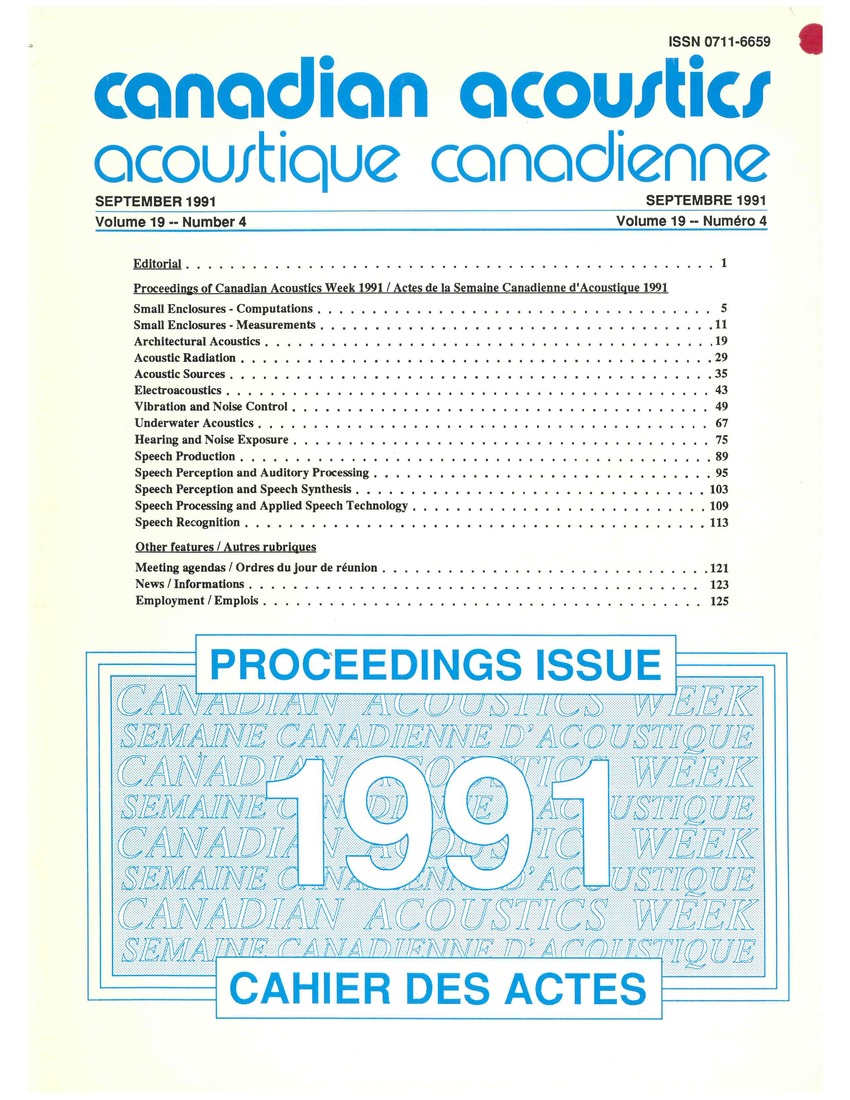Simulation of the acoustic radiation emitted by vibrating structures
Keywords:
acoustic noise, acoustic radiators, noise abatement, variational techniques, vibrations, simulation, vibro-acoustic behaviour, acoustic radiation, vibrating structures, radiation model, semi-complex structure, variational method, boundary conditions, stiffeners, added masses, mechanical sources of vibrations, output impedance, input impedance, quadripole approach, kinetic energy, radiation efficiency, overall sound power, noise controlAbstract
In order to control noise at source during the designing phase, a radiation model of a semi-complex structure has been developed. Based on analytical approach using a variational method, this model allows one to predict the effects of the boundary conditions as well as stiffeners and added masses with force or moment type of excitation. To meet industrial applications, calculations have been extended to mechanical sources of vibrations. A theoretical analysis of the problem is presented. The actual force input into the structure is the boundary result of both the output impedance of the source and the input impedance of the structure. A quadripole approach for the source assembly enables one to calculate the force input, the kinetic energy the radiation efficiency and the overall sound power. The key novelty of this method lies in its capacity to predict, a priori, the radiated noise in various configurations allowing the designer to rationally choose the best configuration in terms of noise controlAdditional Files
Published
How to Cite
Issue
Section
License
Author Licensing Addendum
This Licensing Addendum ("Addendum") is entered into between the undersigned Author(s) and Canadian Acoustics journal published by the Canadian Acoustical Association (hereinafter referred to as the "Publisher"). The Author(s) and the Publisher agree as follows:
-
Retained Rights: The Author(s) retain(s) the following rights:
- The right to reproduce, distribute, and publicly display the Work on the Author's personal website or the website of the Author's institution.
- The right to use the Work in the Author's teaching activities and presentations.
- The right to include the Work in a compilation for the Author's personal use, not for sale.
-
Grant of License: The Author(s) grant(s) to the Publisher a worldwide exclusive license to publish, reproduce, distribute, and display the Work in Canadian Acoustics and any other formats and media deemed appropriate by the Publisher.
-
Attribution: The Publisher agrees to include proper attribution to the Author(s) in all publications and reproductions of the Work.
-
No Conflict: This Addendum is intended to be in harmony with, and not in conflict with, the terms and conditions of the original agreement entered into between the Author(s) and the Publisher.
-
Copyright Clause: Copyright on articles is held by the Author(s). The corresponding Author has the right to grant on behalf of all Authors and does grant on behalf of all Authors, a worldwide exclusive license to the Publisher and its licensees in perpetuity, in all forms, formats, and media (whether known now or created in the future), including but not limited to the rights to publish, reproduce, distribute, display, store, translate, create adaptations, reprints, include within collections, and create summaries, extracts, and/or abstracts of the Contribution.


